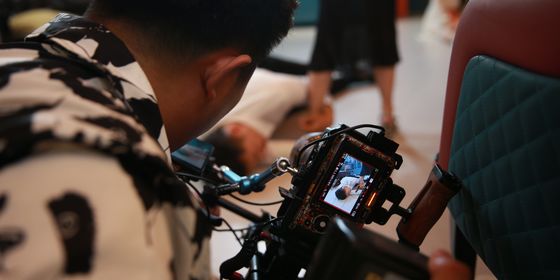As meditation and mindfulness apps continue to surge in popularity, consumers struggle to get their money’s worth
Sitting in front of her laptop inside her Beijing apartment, Fang Yingqi is in a state of focused tranquility. Eyes closed and back straight, she takes deep breaths according to the soft guidance of the tutor’s voice floating through her computer’s speakers: “Inhale and exhale…feel the temperature difference when the air comes in…and out.”
This 15-minute meditation session is part of a 4,000-yuan online mindfulness course Fang signed up for earlier this year. Stressed by her job at a venture capital firm and preoccupied with family life, Fang enrolled in the course after seeing posts about the anxiety-reducing effects of mindfulness on social media. “I think it’s a way for people to learn how to nurture their ‘inner wisdom,’” she says. “I believe with long-term practice; it could help me to clarify my thoughts.”
Fang is not alone. Mindfulness and meditation content is booming online in China as middle-class urbanites jump on a trend that has spread to the country from the US in recent years. On Ximalaya FM, China’s largest podcast platform, mindfulness (正念) and meditation (冥想) courses have over 163,000 subscribers, with users listening to related content more than 10 million times. At the offices of large technology firms like Xiaomi and Didi, there are rooms devoted to mindfulness and meditation, as well as lectures and sharing sessions regarding techniques (like those you might find in Silicon Valley).
Interest spiked during the Covid-19 pandemic, with searches for “meditation” on Baidu’s search engine nearly doubling from January to March 2020, compared with the same period during the previous year.
From free five-minute videos online by amateur practitioners to 6,000-yuan months-long courses led by renowned psychology professors, mindfulness content has become standard practice for millions of Chinese looking to unwind. But with no industry standards for courses and no established qualifications for coaches, the quality of mindfulness products varies wildly. Likewise, courses often market themselves as a miracle cure for their clients’ psychological woes, leaving many disappointed when results don’t match those advertised, and leading some to even question the efficacy of mindfulness overall.
Many of the techniques of mindfulness, like meditation, have been practiced in China for centuries through Buddhism, which first came to the country from India around 2,000 years ago. But the modern kind that has swept China in recent years first gained popularity in the US in the 1990s after Jon Kabat-Zinn, an MIT-educated scientist, developed an eight-week stress reduction course for patients suffering from chronic pain.
There are two key elements to practicing mindfulness today in China, according to Liu Xinghua, a psychology professor at Peking University who designs commercial mindfulness courses for the public. “First you have to accept the present moment, regardless of pain or happiness,” Liu told Guangming Daily in August 2022. Then “be aware of your breathing. Don’t blame yourself if you get distracted; return to feel your breath, again and again.”













